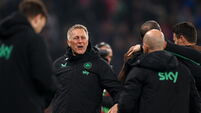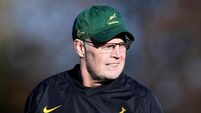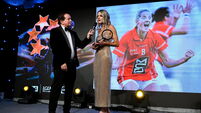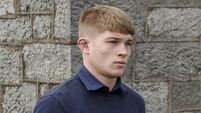Paul Rouse: Never mind the exercise fads, stay going like Maurice Davin

NEW TRENDS: Wearable tech is all the rage.
These few days are normally the most difficult time for those of us who pledged to return to exercise in the New Year.
The novelty of putting on a pair of runners or sitting up on a bike or pulling on swimming togs is well gone.
The initial surge of energy and excitement has surely dissipated.
And if ‘Dry January’ is part of the equation, then the thirst might just be crying out for a damburst.
The sober reality for those who wish for physical fitness is that the fundamental necessity is habit. If you can establish the habit of moderation in food and drink, and regularity in exercise, then you have a real chance of being fit and healthy.
Without habit, it all becomes a whole lot more difficult.
All of this is not exactly revelatory, in fact it is boringly obvious. And more than a small bit annoying.
But there is no substitute for the discipline, organisation, resilience and determination of habit.
There is a huge industry now, though, in trying to disguise this basic truth. The illusion is that good health is fairly easy to achieve and the attempt to – for instance – shed weight is all good clean fun.
This illusion is brought to you by small armies of entrepreneurial lifestyle coaches, or by the makers and sellers of phone-based apps, attempting to make their way into your wallet.
For example, in the new upgrade on iPhone, the arrival of the newly-designed Fitness app offers to track your workouts day-after-day. It will also give you other bespoke workouts for you to follow . There is nothing really to criticise about the nature of the workouts or the manner in which they are organised.
And, of course, it is also beautifully presented.
But you have to pay €9.99 per month. Or you can “Try the Annual Pass and Save”. This “saving” means that you pay €79.99 up front.
For something you can get for free.
It would be fascinating to read a study on how much money people burn on apps like this. They sit in the bonfire of broken dreams, beside gym memberships, wearable technologies and all manner of new gear. Spend and you will be well, is the message.
Part of this sales pitch is the notion that what is being offered here is somehow fresh and ground-breaking and new.
It’s not.
Many of us have sat at one time or another in the Davin Stand at Croke Park. It is named after Maurice Davin, the first President of the GAA, an organisation which he helped Michael Cusack to found.
Before founding the GAA, Maurice Davin was a hugely successful athlete. At the heart of Davin’s success lay a remarkable training regime which he began in his early-30s when he took up athletics.
Those familiar with the supposedly recent innovations of modern training might recognise the fundamentals of a carbohydrate and protein diet, proper hydration, adequate rest and ice-baths already worked out by Maurice Davin in the 1870s.
On display in the GAA museum is the notebook which details the extent of his fitness training. Davin constructed what might be considered a mini-gymnasium at his farm in Deerpark, near Carrick-on-Suir in Tipperary. There, he practiced weight-lifting and used home-made dumbbells and assorted weighted clubs to develop the power in his muscles.
Davin was also meticulous in his diet. Every morning he drank pints of water from the clear well at Deerpark. He followed that with a bowl of porridge, a little bread and some beef or mutton.
The mid-day meal was usually beef or mutton again, with a variety of vegetables, and then in the evening he ate toast and porridge. He avoided salty bacon and all fatty foods, including butter.
He extolled the virtues of fresh fish, and didn’t drink tea and coffee.
He neither consumed alcohol nor smoked cigarettes or a pipe. Indeed, he despised smoking, advising that anyone addicted to cigarettes would never be any good at anything. Crucially, he had the drive, the desire, the discipline to stick rigidly to this diet year after year.
In respect of his training, Davin wrote that he never believed in doing his utmost when he worked out, rather he believed it was better to stay within yourself and keep something in reserve.
He wrote of the virtue of adequate rest and of cooling the body using fresh, cold water.
Thankfully, he did hold out hope in his preparatory notes for those who might not be capable of his own monastic dedication. To this end, he noted that “it will be found that no absolute rule can be laid down for all men.”
In sport, Davin became the dominant figure at the Irish athletic championships and went on to win ten gold medals for performances in weight-throwing events.
Yet, his most stunning moment on the sportsfield must surely have taken place during the first international athletics match against England which was held in Lansdowne Road in June 1876.
He won the hammer throw and the shot putt with two huge performances. These victories were mere warm-up for a far more enjoyable success. Midway through the afternoon, during a break in the competition, assorted members of the visiting English team were out in the middle of the grounds, preening and shaping as they performs feats of strength for the crowd.
Davin watched for a while, then strolled over and proposed that he would single-handedly carry three of the heaviest members of the English team down the field. The challenge was accepted and three men with a combined weight of 46 stone stepped forward.
Davin lifted one on his back and one up on each shoulder, and set off in front of the main stand. The Irish crowd rose to acclaim the power and the style of their hero. His adoring brother, Pat Davin, observed that in performing the feat, Maurice “appeared to be no way overloaded.”
What matters, also, for us, is that Davin maintained the core of his habits long after he finished competing. In short, he ate properly and exercised for the rest of his life, a full half-century of being a retired athlete.
To the end of his days he enjoyed fine health. When an American journalist, William Fletcher, called to his farm to interview him for the ‘New York Daily News’ in 1907, Davin brought Fletcher out into the sports field and demonstrated how to throw the hammer. His third attempt would have been good enough to win the Irish championships as late as 1891.
Over the years there was a procession of foreign visitors to meet him. In 1912, for example, American athletes and officials travelling home from the Stockholm Olympics detoured to meet Davin.
When he died on 27 January 1927, he had been ill for barely a fortnight. He was 85 years old.
The question remains whether it is a priority in our lives to devote the time and the energy to build and sustain the habit. There’s no pretending that it’s easy or straightforward. The alternatives aren’t great, however.
Stay going.








